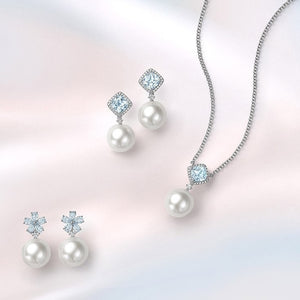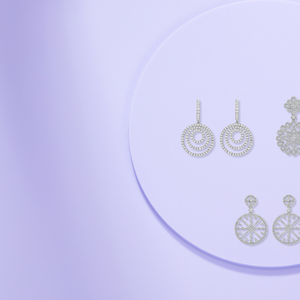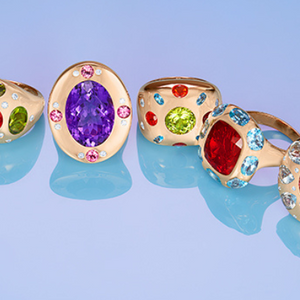Every gemstone has its own unique set of properties that make them beautiful and captivating in their own special way. The rarity of many gemstones also means that they are surrounded by mystery, superstitions and lore. The birthstone tradition is believed to date back to a breastplate with gemstones representing the 12 tribes of Israel and, according to legend, wearing them during their assigned months heightened any healing powers. Scroll down to learn more about your favourite gemstones and treasure them for years to come.
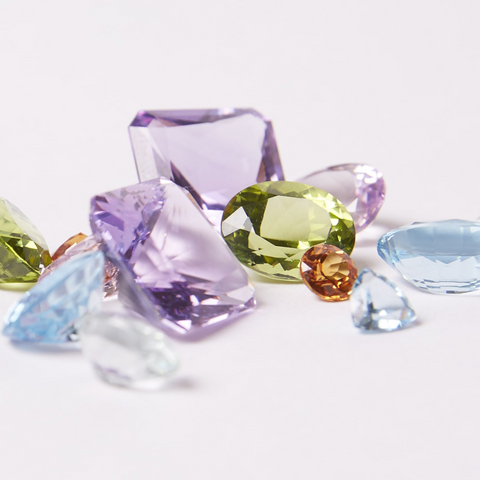
Amethyst
Amethyst is the most highly valued stone in the Quartz group and the birthstone for February. Its name has a meaning you probably wouldn’t associate with the pretty violet or lavender-coloured gemstone; it translates as ‘sober’, because it was worn as an amulet against drunkenness. In the Chinese philosophy of Feng Shui, Amethyst is believed to enhance the ‘wealth corner’ that brings about the giving and receiving of material riches. Prasiolite, more commonly referred to as Green Amethyst (from the Greek for leek), is a very soft and delicate, pale shade of green.
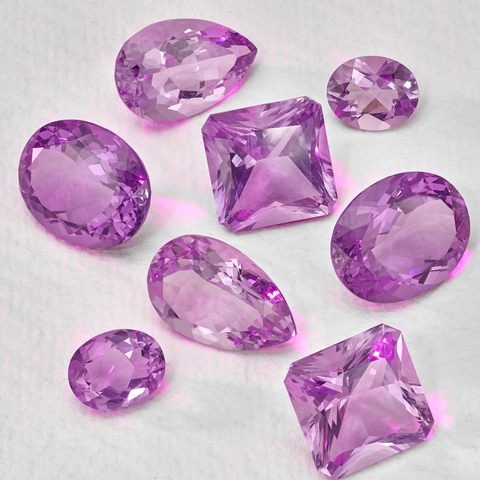
Aquamarine
Aquamarines are found in shades ranging from pale pastel blue to a deep, dark, ocean blue. The name comes from the Latin for ‘water of the sea’, referencing its colour and clarity, and it is the birthstone of those born in March. Aquamarine is the blue variety of the Beryl group, which includes Emerald and Morganite. The Ancient Greeks and Romans relied on the ‘Sailors’ Gem’ to ensure safe passage across stormy seas.
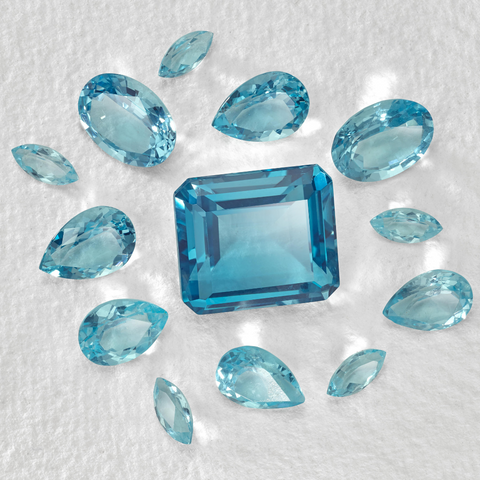
Beryl
Green Beryl is a beautiful sea-green gemstone, named from the Greek beryllos, which means precious blue-green colour. The pink variety of Beryl is known as Morganite and yellow variety is Heliodor, commonly referred to as Golden Beryl. When the very first eyeglasses were constructed in 13th century Italy, the lenses were made from Beryl or rock crystal, as glass could not be made clear enough. Legend has it that Beryl can ward off evil spirits, protect travellers from danger, promote marital love, and maintain youthfulness.
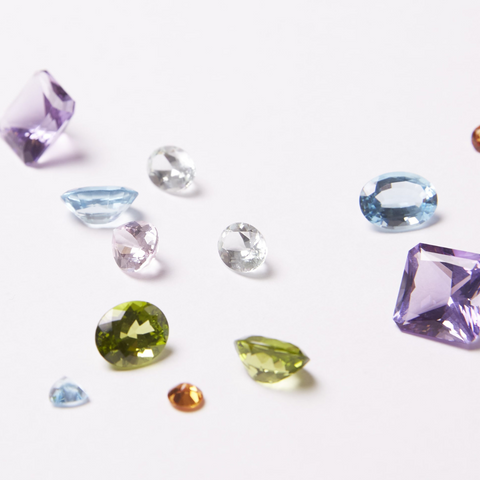
Blue Topaz
Kiki always uses the elegant sky-blue shade of Topaz but in fact, the most common colour of Topaz is actually a yellow-orange shade. It is also found in yellow, pink, red, pale green and blue. Its name is supposedly derived from an island in the Red Sea, once known as Topazos, which was famous for yielding stones in ancient times. It is symbolic of fidelity and love.
Citrine
Citrine is a form of Quartz and the sister of Amethyst. Ranging from the palest yellow to a dark golden syrup colour, its name originates from citrin, the French word for lemon. Its vibrant, warm colour has always been symbolic of healing and hope. Citrine is one of two birthstones used to celebrate November birthdays; the other is Topaz. Ancient Egyptians used Citrine gems as talismans; it is associated with hope, cheerfulness, youth, health and fidelity. Nicknames for this stone include ‘Success Stone’, because of its tendency to attract wealth.
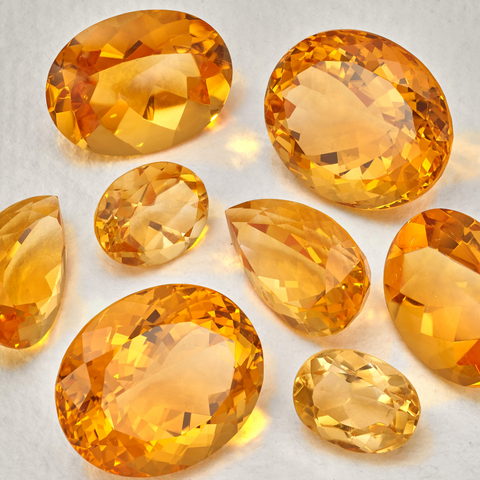
Diamond
April’s birthstone is Diamond. Ancient civilisations believed that Diamonds were created when lightning struck rock. The name refers to its hardness, which is adamantine, a term derived from the Greek ‘adamas’, meaning unbreakable. In 1477, the Archduke of Austria commissioned the first diamond engagement ring on record for his fiancée, and dazzling Diamonds have remained popular for engagement rings and special 60th wedding anniversary gifts ever since.
Fire Opal
This remarkable, distinctive gemstone comes in shades varying from pale yellow and orange to fiery red. Despite the shared name, Fire Opals, found only in Mexico, are quite different from popular white Opals, which are prized for displaying flashes of rainbow colours, an optical phenomenon called ‘play-of-colour’. Fire opals are transparent or translucent, with traces of iron that gives them their orange appearance. Believed to have magical powers, Fire Opals symbolise love, loyalty, hope, happiness and truth, and are respected in ancient India as a symbol of the warmest love.

Iolite
Iolite is an elegant, inky-blue gemstone, sometimes called the Water Sapphire because of its colour, and named after the Greek for ‘violet’. Like Tanzanite, another violet blue gemstone, Iolite is pleochroic, meaning it transmits light differently when viewed from different directions. The Vikings made Iolite’s pleochroism a virtue by using thin slices of the stone as a light polariser to determine the direction of the sun on overcast days. Although only officially named in 1912, Iolite has been used and admired for centuries.
Lemon Quartz
Lemon Quartz is a beautiful shade of pale yellow, a colour associated with clarity, happiness and communication. It is actually a very light-yellow Citrine, as it is the yellow variety of quartz. It is thought to bring balance and positive energy to its wearer – and it is a very uplifting gemstone that can be worn daily for everything from parties to pilates. The word Quartz is derived from the ancient Greek krustallos, meaning ice; the Greeks and Romans believed that Quartz was ice that could not melt because it was formed by the gods.

Morganite
This gemstone, also called Pink or Rose Beryl, was discovered in Madagascar in 1910. George Kunz, a renowned gemologist and member of The New York Academy of Sciences, then named this beautiful pink variety of Beryl ‘Morganite’ after financier and gem enthusiast J. P. Morgan. The Morganite stone is found in shades ranging from the prettiest soft pink and salmon colours to violet. Morganite is one Kiki’s favourite gemstones and when worn is the perfect pop of pink akin to wearing blush.

Peridot
A distinctive olive green, those born in August can claim Peridot, believed to instil power and influence in the wearer, as their birthstone. The name could derive from faridat, the Arabic for gem. It was mined on an island in the Red Sea from 250BC but forgotten for centuries, only to be rediscovered around 1900. Cleopatra is believed to have had a vast collection of this beautiful gem.

Rubellite
The gemstone known as Rubellite, which means ‘red stone’, is the name given to very intense pink and red Tourmaline, and it is found in shades ranging from a deep violet-pink to a vivid red. According to a charming ancient Egyptian legend, their variety of colours is the result of the fact that, on the long way from the Earth’s heart up towards the sun, Tourmalines travelled along a rainbow and collected its colours along the way.
Smoky Quartz
Smoky Quartz is a brown grey, translucent variety of Quartz that ranges in clarity from almost completely transparent to an opaque brownish-grey or black crystal. This dark-coloured gemstone is striking and chic, named for its smoky hue.
Tanzanite
Tanzanite ranges from blue to purple, with a gently violet- blue being the most prized hue. The name for the rare purple-blue gemstone comes from the East African country Tanzania, where it was momentously discovered in 1967. Tanzania is the only known source for these beautiful stones. Tanzanite is the birthstone for those born in December.

Tourmaline
Tourmalines come in a wide variety of colours, and Kiki’s favourites are elegant mint green and striking pink. Upon its discovery, Green Tourmaline was confused for an Emerald. This confusion is reflected in the name of the mineral, ‘toramalli’ which means mixed gems in Sinhalese, and this was adopted by Dutch merchants and used for the coloured stones they would find in Ceylon, today known as Sri Lanka.





